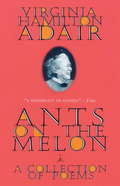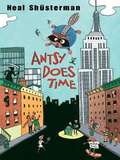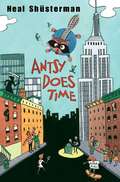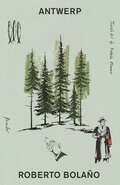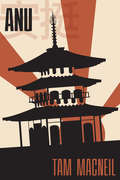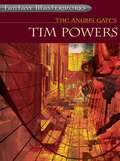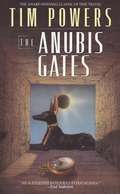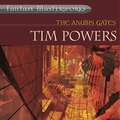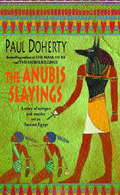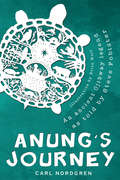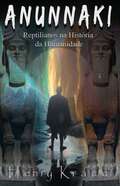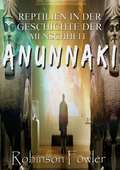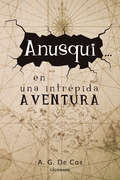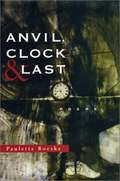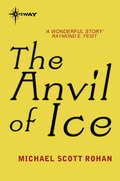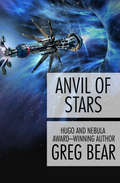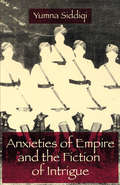- Table View
- List View
Ants on the Melon: A Collection of Poems
by Virginia Hamilton Adair" Virginia Adair speaks directly and unaffectedly, in an accent stripped of mannerism and allusion. Ants on the Melon exhibits enough formal variety, freshness, and intelligence to confirm, at one stroke, that Ms. Adair is a poet of accomplishment and originality. " --Brad Leithauser, The New York Times Book Review " Extraordinarily moving. Her voice is clear, assured, varied, and utterly her own. " --A. Alvarez, The New York Review of Books " The rhyme is ingenious, the humor saucy and unsparing, and the author clearly takes a delight in perversity, in an inversion of the expected. " --Alice Quinn, The New Yorker " How bright and unmuddled and unaffected and unswerving these poems are. There's such aplomb, no faking, such a true hard edge. They never miss. " --Alice Munro " Adair writes with a thinking heart's and a feeling mind's unusual clarity. Here is a sensual, wise, precise, amazing voice. " --Sharon Olds Virginia Hamilton Adair is America's most widely read and respected serious poet. Ants on the Melon has already become a landmark in the nation's literary history, and the advent of this paperback edition guarantees that her great gifts will be recognized and appreciated by an even larger audience.
Antsy Does Time
by Neal ShustermanAntsy Bonano, narrator of The Schwa Was Here, is back with another crazy tale. This time, Antsy signs a month of his life over to his "dying" classmate Gunnar Umlaut. Soon everyone at school follows suit, giving new meaning to the idea of "living on borrowed time." But does Gunnar really have six months to live, or is news of his imminent death greatly exaggerated? And when a family member suffers a heart attack after donating two years to Gunnar, Antsy starts to wonder if he has tempted fate by trying to play God . . . .
Antsy Does Time
by Neal ShustermanA Brooklyn eighth-grader nicknamed Antsy befriends the Schwa, an "invisible-ish" boy who is tired of blending into his surroundings and going unnoticed by nearly everyone.
Antsy Does Time
by Neal ShustermanIt was a dumb idea, but one of those dumb ideas that accidentally turns out to be brilliant–which, I’ve come to realize, is much worse than being dumb. My name’s Antsy Bonano–but you probably already know that–and unless you got, like, memory issues, you’ll remember the kid named the Schwa, who I told you about last time. Well, now there’s this other kid, and his story is a whole lot stranger. It all started when Gunnar Ümlaut and I were watching three airborne bozos struggle with a runaway parade balloon. That’s when Gunnar tells me he’s only got six months to live. Maybe it was because he said he was living on borrowed time, or maybe it was just because I wanted to do something meaningful for him, but I gave him a month of my life . . . . . . And that’s when things began to get seriously weird. From the Compact Disc edition.
Antwerp (New Directions Pearls #0)
by Roberto BolañoBolano’s radical first novel makes its paperback debut as a New Directions Pearl. Written when he was only twenty-seven, Antwerp can be viewed as the Big Bang of Roberto Bolano’s fictional universe. This novel presents the genesis of Bolano’s enterprise in prose; all the elements are here, highly compressed, at the moment when his talent explodes. From this springboard—which Bolano chose to publish in 2002, twenty years after he’d written it (“and even that I can’t be certain of”)—as if testing out a high dive, he would plunge into the unexplored depths of the modern novel. Voices speak from a dream, from a nightmare, from passersby, from an omniscient narrator, from “Roberto Bolano.” Antwerp’s fractured narration in fifty-four sections moves in multiple directions and cuts to the bone.
Antwerp
by Roberto Bolaño“It’s hard to think of a writer who has multiplied the possibilities more times than Roberto Bolaño . . . [Antwerp is] exceptional and moving.” —Nicole Krauss, The Guardian Oft called the “big bang” of Roberto Bolaño’s universe, Antwerp is his first novel—or the shattered remnants of one. Written when he was just twenty-seven years of age, it was so intensely strange and solitary that he tucked it away for more than twenty years, certain that any publisher would slam the door in his face. It proceeds in hallucinatory sketches: a lonely highway, a desolate campground, a freshly abandoned hotel room; a tryst, an interrogation, a murder; and somewhere just out of reach, a young, feverish writer named Roberto Bolaño drifting in and out of view. A radical, sui generis effort by a burgeoning genius, Antwerp is an essential part of Bolaño’s oeuvre.
Anu
by Tam MacneilJao is in a quandary. He can't find work, and he doesn't want to work for Kazematsuri anyway. That doesn't stop the crazy man from sending new recruits to test their skills on Jao.There is also something going on with Jao's upper class boyfriend, Masahiro. Is he really so busy with his opium business that he struggles to find time for their relationship? Or is he getting tired of slumming it with Jao?Then Kazematsuri turns up in person to employ Jao to find out what a new gang, the Anu, is doing in Okatsu. At the same time Fan, the daughter of his friend Akai, disappears and Akai hires Jao to find her.Now Jao has enough money, but he also has several dangerous people to contend with. And he still needs to find out what's really going on with Masahiro.
Anubavangal
by Bhuvana Natarajan Dibyendu PalitThis book is a Tamil translation by Bhuvana Natarajan of the Award Winning Bengali Novel ‘Anubhav’ by Dibyendu Palit. In this novel, Atreyi's marriage takes her to London from Kolkata only to find that her husband is in love with another woman. Back home she begins her life to be independent and gets a job and rediscovers herself.
The Anubis Gates (FANTASY MASTERWORKS)
by Tim PowersBrendan Doyle is a twentieth-century English professor who travels back to 1810 London to attend a lecture given by English romantic poet Samuel Taylor Coleridge. This is a London filled with deformed clowns, organised beggar societies, insane homunculi and magic.When he is kidnapped by gypsies and consequently misses his return trip to 1983, the mild-mannered Doyle is forced to become a street-smart con man, escape artist, and swordsman in order to survive in the dark and treacherous London underworld. He defies bullets, black magic, murderous beggars, freezing waters, imprisonment in mutant-infested dungeons, poisoning, and even a plunge back to 1684.Coleridge himself and poet Lord Byron make appearances in the novel, which also features a poor tinkerer who creates genetic monsters and a werewolf that inhabits others' bodies when his latest becomes too hairy.
The Anubis Gates
by Tim PowersAce Books is proud to present this classic novel of time travel in a beautiful new trade edition. It took the fantasy world by storm a decade ago, and now fans can savor this Philip K. Dick Award-winner for the first time all over again. Only the dazzling imagination of Tim Powers could have assembled such an insane cast of characters: an ancient Egyptian sorcerer, a modern millionaire, a body-switching werewolf, a hideously deformed clown, a young woman disguised as a boy, a brainwashed Lord Byron, and finally, our hero, Professor Brendan Doyle.
The Anubis Gates (FANTASY MASTERWORKS)
by Tim PowersBrendan Doyle is a twentieth-century English professor who travels back to 1810 London to attend a lecture given by English romantic poet Samuel Taylor Coleridge. This is a London filled with deformed clowns, organised beggar societies, insane homunculi and magic.When he is kidnapped by gypsies and consequently misses his return trip to 1983, the mild-mannered Doyle is forced to become a street-smart con man, escape artist, and swordsman in order to survive in the dark and treacherous London underworld. He defies bullets, black magic, murderous beggars, freezing waters, imprisonment in mutant-infested dungeons, poisoning, and even a plunge back to 1684.Coleridge himself and poet Lord Byron make appearances in the novel, which also features a poor tinkerer who creates genetic monsters and a werewolf that inhabits others' bodies when his latest becomes too hairy.
The Anubis Slayings: A Story of Intrigue and Murder Set in Ancient Egypt (Amerotke #3)
by Paul DohertyHatusu, the remarkable young widow of Pharaoh Tuthmosis II, has forced Egyptian society to acknowledge her as Pharaoh, and her success in battle is spreading Egypt's glory well beyond its frontiers. In the Temple of Anubis, negotiations are taking place between Hatusu and the defeated King Tushratta of Mitanni for a peace treaty that will seal her greatest victory. But in one night, two hideous murders in the temple and the theft of the Glory of Anubis threaten the tentative truce. The respected judge Amerotke must find the truth or Egypt's fragile peace could be destroyed for ever. The Anubis Slayings is Paul Doherty's third novel set in Ancient Egypt, following The Mask of Ra and The Horus Killings.
The Anubis Slayings (Amerotke Mysteries, Book 3): Murder, mystery and intrigue in Ancient Egypt
by Paul DohertyA double murder and a robbery threaten the tentative peace of Ancient Egypt...The third mystery to feature Paul Doherty's engaging Judge Amerotke, The Anubis Slayings is a thrilling novel of murder, intrigue and sleuthing. Perfect for fans of Christian Jacqs and Wilbur Smith. 'Doherty evokes atmospherically the sounds, smells and texture of ancient Egypt. But he does not simply rely on an apparently encyclopaedic familiarity with life along the Nile; he also creates a fiendish locked-room mystery and a solution as clever as the puzzle' - Scotsman Hatusu, the remarkable young widow of Pharaoh Tuthmosis II, has forced Egyptian society to acknowledge her as Pharaoh, and her success in battle is spreading Egypt's glory well beyond its frontiers. In the Temple of Anubis, negotiations are taking place between Hatusu and the defeated King Tushratta of Mitanni for a peace treaty that will seal her greatest victory. But in one night, two hideous murders in the temple and the theft of the Glory of Anubis threaten the tentative truce. The respected Judge Amerotke must find the truth or Egypt's fragile peace could be destroyed for ever. What readers are saying about The Anubis Slayings:'I couldn't put this book down, it was fantastic''He [paints] a vivid and colourful setting for the events of the book''Paul Doherty always manages to gives us thrillers that keep us turning the pages'
Anung's Journey: An ancient Ojibway legend as told by Steve Fobister
by Brita Wolf Carl NordgrenThis ancient Ojibway legend predates contact with European settlers, but the drummer boy and the people he meets at the end of his journey couldn't be more familiar to modern culture.When the orphaned Anung sets out on his vision quest, he sees clearly that his purpose in life is to find the greatest chief of all and tell him of the many acts of kindness the mothers and fathers of the village have given to Anung. When the people of his village learn of the vision, they are proud of him. For every man of the village loves Anung as his son. Every woman is his mother. They believe Gitche Manitou, the great creator, has chosen their son for a special journey. In his quest to find the greatest chief, Anung travels through the 13 tribes of the First Nations, across forests, plains, water, and desert. Along the way, he is accompanied by Turtle, the interpreter of all languages. He finds friends in the most unlikely of places--a squirrel's nest, a mother bear's den, and a city filled with people from every tribe. At each stop, Anung and his drum sing of his mothers and fathers and his quest to meet the greatest chief. What Anung finds at the end of his journey will both surprise and thrill readers of all ages. This ancient legend, told in the beautifully poetic style of Carl Nordgren, begs to be read aloud and savored.
Anunnaki: Reptilianos na História da Humanidade
by Mariana Baroni Robinson FowlerMuitas são as culturas que falam da existência dos seres Reptilianos, considerados deuses: os Anunnakis. Há muitas evidências, rastros que esses seres deixaram em nossa história. Os antigos indicaram e representaram esses deuses em suas pinturas, escritos e, acima de tudo, construções, que são impossíveis de se reproduzir em nossa atualidade. Seus conhecimentos tecnológicos e do universo influenciaram nossa história... até os nossos dias.
Anunnaki: Reptilien in der Geschichte der Menschheit
by Christine Wilhelm Robinson FowlerViele sind die Kulturen, die uns über die Existenz von Reptilien-Wesen berichten, die als Götter betrachtet werden: Die Anunnaki. Es gibt viele Beweise, Spuren, die diese Wesen in unserer Geschichte hinterlassen haben. Die Alten deuteten und repräsentierten diese Götter in ihren Gemälden, Schriften und vor allem ihren Gebäuden, die in unserer Gegenwart unmöglich zu reproduzieren sind. Sein Wissen, sowohl das technologische als auch das Bewusstsein des Universums, beeinflusste unsere Geschichte ... Bis heute ...
Anusqui... en una intrépida aventura
by A. G. De CosLa aventura comenzó al descubrir aquel libro misterioso. ¿Se escribirá en sus páginas mi destino? Un libro milenario, una carta de navegación antigua, un reloj para viajar en el tiempo y una misión. Como escenario: el mar, el río, los glaciares y cielos sembrados de estrellas. Anusqui con su reloj mágico, viajará al siglo XI donde conocerá a su nuevo amigo Santiago. Con él y el resto de los personajes, salvarán al mundo de una inminente amenaza. ¿Os cuento un secreto? En medio de esta intrépida aventura, Anusqui conocerá a personajes históricos, se sorprenderá con el inquietante mundo de los hielos y descubrirá el porqué de sus superpoderes.
Anvil, Clock and Last
by Paulette RoeskeLike the seismic shifts and explosions that reveal hidden features of the earth, Paulette Roeske's poems record upheavals and jolts of self-knowledge in the seeming-solid world where we hammer out our lives. The labor of poetic creation cracks open the self: "How could I have guessed the geode's / rare concentrics, its brilliant sharp-toothed crystals / ... It was hope that returned me to the hammer / to lay open the bright interiors / I could have overlooked". Readers will find that hope rewarded as the poet wields the tools of time and legacy -- anvil, clock, and last -- to craft meticulous verses yielding glittering insight. The clock is omnipresent in this collection, signaling the exquisite tension between the desire to erase the past and the urge to devour all experience. A father's legacy to a daughter is inescapable: "He's left his mark on everything / time filtered through his hands. He's left / it all to me". But Roeske's rare intensity and depth of thought produce poems of mortality and loss balanced by the unexpected appearance of love. After guiding us through the hard forging of a self, the poet places us on the "platform, springboard, raft, or tippy boat", urging us to see love, like all life's experiences, as "a place to fling yourself into", eyes open, fingers crossed.
The Anvil of Ice
by Michael Scott RohanThe chronicles of THE WINTER OF THE WORLD echo down the ages in half-remembered myth and song - tales of mysterious powers of the Mastersmiths, of the forging of great weapons, of the subterranean kingdoms of the duergar, of Gods who walked abroad, and of the Powers that struggled endlessly for dominion. In the Northlands, beleaguered by the ever-encroaching Ice and the marauding Ekwesh, a young cowherd, Alv, saved from the raiders by the mysterious Mastersmith, discovers in himself an uncanny power to shape metal - but it is a power that may easily be turned to evil ends, and on a dreadful night Alv flees the Mastersmith, and embarks on the quest to find both his own destiny, and a weapon that will let him stand against the Power of the Ice.
The Anvil of Ice (The Winter of the World #1)
by Michael Scott RohanMichael Scott Rohan's Winter of the World trilogy, the story revolves around Alv a cowherd whose childish wishes for the destruction of his hated home is fulfilled when the Ekwesh raiders appear, their boats low on the sea. The boy is claimed by the Mastersmith travelling with these barbarians. Displaying a potential for smithcraft, Alv makes the long travel to the Mastersmith's reclusive tower that clutches the mountains opposite the relentless grinding of the Ice.
The Anvil of Ice
by Michael Scott RohanThe chronicles of THE WINTER OF THE WORLD echo down the ages in half-remembered myth and song - tales of mysterious powers of the Mastersmiths, of the forging of great weapons, of the subterranean kingdoms of the duergar, of Gods who walked abroad, and of the Powers that struggled endlessly for dominion. In the Northlands, beleaguered by the ever-encroaching Ice and the marauding Ekwesh, a young cowherd, Alv, saved from the raiders by the mysterious Mastersmith, discovers in himself an uncanny power to shape metal - but it is a power that may easily be turned to evil ends, and on a dreadful night Alv flees the Mastersmith, and embarks on the quest to find both his own destiny, and a weapon that will let him stand against the Power of the Ice.
Anvil of Stars (Forge of God #2)
by Greg BearThe &“provocative and entertaining follow-up&” to The Forge of God: Exiled from their planet, humans unite with one alien race in the fight against another (Publishers Weekly). The Ship of the Law travels the infinite enormity of space, carrying eighty-two young people: fighters, strategists, scientists—and children. After one alien culture destroyed their home, another offered the opportunity for revenge in the form of a starship built from fragments of the Earth&’s corpse, a ship they now use to scour the universe in search of their enemy. Working with sophisticated nonhuman technologies that need new thinking to comprehend them, they&’re cut off forever from the people they left behind. Denied information, they live within a complex system that is both obedient and beyond their control. They&’re frightened. And they&’re waging war against entities whose technologies are unimaginably advanced and vast, and whose psychology is ultimately, unknowably alien. In Anvil of Stars, the multimillion-selling, Nebula Award–winning author of Eon and other science fiction masterpieces &“fashions an action-packed and often thrilling plot; by using each of the well-depicted alien races to mirror human behavior, he defines what it means to be Homo sapiens. . . . A gripping story&” (Publishers Weekly).
Anvil of Stars (Forge of God #2)
by Greg BearThe &“provocative and entertaining follow-up&” to The Forge of God: Exiled from their planet, humans unite with one alien race in the fight against another (Publishers Weekly). The Ship of the Law travels the infinite enormity of space, carrying eighty-two young people: fighters, strategists, scientists—and children. After one alien culture destroyed their home, another offered the opportunity for revenge in the form of a starship built from fragments of the Earth&’s corpse, a ship they now use to scour the universe in search of their enemy. Working with sophisticated nonhuman technologies that need new thinking to comprehend them, they&’re cut off forever from the people they left behind. Denied information, they live within a complex system that is both obedient and beyond their control. They&’re frightened. And they&’re waging war against entities whose technologies are unimaginably advanced and vast, and whose psychology is ultimately, unknowably alien. In Anvil of Stars, the multimillion-selling, Nebula Award–winning author of Eon and other science fiction masterpieces &“fashions an action-packed and often thrilling plot; by using each of the well-depicted alien races to mirror human behavior, he defines what it means to be Homo sapiens. . . . A gripping story&” (Publishers Weekly).
The Anvil Of The World
by Kage BakerMr. Smith begins a long series of adventures by agreeing to become caravan master for his cousin's company.
Anxieties of Empire and the Fiction of Intrigue
by Yumna SiddiqiFocusing on late nineteenth- and twentieth-century stories of detection, policing, and espionage by British and South Asian writers, Yumna Siddiqi presents an original and compelling exploration of the cultural anxieties created by imperialism. She suggests that while colonial writers use narratives of intrigue to endorse imperial rule, postcolonial writers turn the generic conventions and topography of the fiction of intrigue on its head, launching a critique of imperial power that makes the repressive and emancipatory impulses of postcolonial modernity visible.Siddiqi devotes the first part of her book to the colonial fiction of Arthur Conan Doyle and John Buchan, in which the British regime's preoccupation with maintaining power found its voice. The rationalization of difference, pronouncedly expressed through the genre's strategies of representation and narrative resolution, helped to reinforce domination and, in some cases, allay fears concerning the loss of colonial power. In the second part, Siddiqi argues that late twentieth-century South Asian writers also underscore the state's insecurities, but unlike British imperial writers, they take a critical view of the state's authoritarian tendencies. <P><P>Such writers as Amitav Ghosh, Michael Ondaatje, Arundhati Roy, and Salman Rushdie use the conventions of detective and spy fiction in creative ways to explore the coercive actions of the postcolonial state and the power dynamics of a postcolonial New Empire. Drawing on the work of leading theorists of imperialism such as Edward Said, Frantz Fanon, and the Subaltern Studies historians, Siddiqi reveals how British writers express the anxious workings of a will to maintain imperial power in their writing. She also illuminates the ways South Asian writers portray the paradoxes of postcolonial modernity and trace the ruses and uses of reason in a world where the modern marks a horizon not only of hope but also of economic, military, and ecological disaster.
